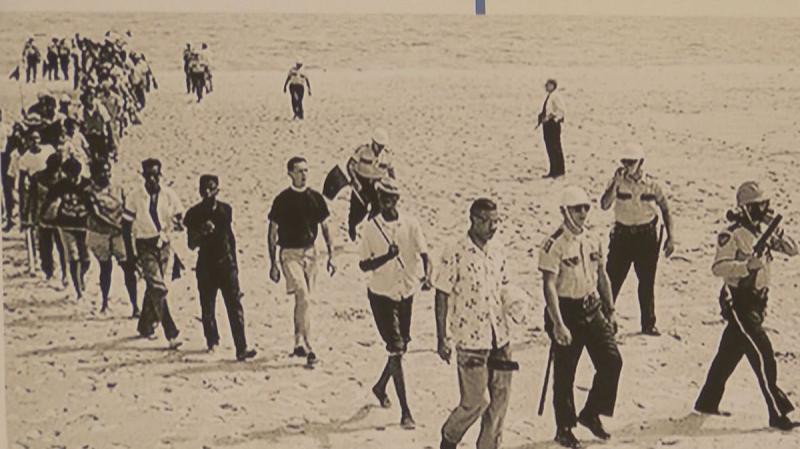'When we say bloody, we mean bloody': Reflecting on the Biloxi wade-ins and Bloody Sunday



BILOXI, Miss. (WLOX) - Before there was Spring Break weekend, there were the Biloxi wade-ins. The wade-ins were protests staged by activists fighting against segregated beaches.
In the 1960s, Black Americans weren't allowed on Coast beaches and many other beaches around the country. In a fight against the segregation, the Biloxi wade-ins first began in 1959. At least three other protests would take place between then and 1963, all led by local physician Dr. Gilbert Mason Sr.

JUM LUND/DAILY HERALD African Americans stage a wade-in on the beach in Biloxi on April 24, 1960 to protest the 'White-only' status of the beaches.
On April 24, 1960, Mason led about 125 volunteers in a peaceful wade-in on three separate areas of the segregated Biloxi Beach. The protesters were trained in non-violent passive resistance and expected to be arrested. Instead, they were violently attacked by a group of white people armed with pipes and chains as police stood by without intervening.
"This is the Bloody Sunday picture here," said Bishop James Black. "When we say bloody, we mean bloody. It was mostly teenagers, but there were quite a few adults there, as well. The adults suffered most of the beatings and bleeding."

The last protest took place three years after "Bloody Sunday" in 1963 and was protected by police while the state waited to hear a decision from the federal appeals court.
Bishop Black was present at the Biloxi wade-ins of the 1960s and recalled some of his experiences Monday over a virtual Zoom meeting.
"If you look closely at that picture, I'm that little skinny-legged guy with a cap on, a hat on with the American flag. Right in front of me is Dr. Mason in 1963."

JUM LUND/DAILY HERALD African Americans stage a wade-in on the beach in Biloxi on April 24, 1960 to protest the 'White-only' status of the beaches.
The violence spread throughout the city, leading to the arrests of mostly Black people.
The last wade-in protest was in 1963. That protest resulted in the local chapter of the NAACP being founded. Black explained how desegregation of the beaches was finally achieved.
"We were not being allowed to enjoy the benefits of our taxes, as well," he said. "Those who had homes on the beaches on the north side of Highway 90 claimed properties across Highway 90 to the water's edge. And, that was challenged because the federal government had paid the money to develop the beach. The beach wasn't always there. So our taxpayers - that is, those of people of color - also paid to open that beachfront."

(Photo source: WLOX)
Four years after the first wade-in, the federal court of appeals ruled in favor of black residents, opening the beaches to the public and making them accessible to all.
Activists all over the country hosted wade-ins, not just those in Biloxi. They happened in other Southern cities like Miami and St. Augustine, as well as in northern towns like Madison, Ct.
Video at link.


For Black History Month.
Something from my neck of the woods.
Great historical article. I'm old enough to remember all of this as it happened.
In 1959 I and two other GIs were refused entry to the USO club in Augusta GA. We were the wrong color.
Good seed. Thank you.
Thank you Ender